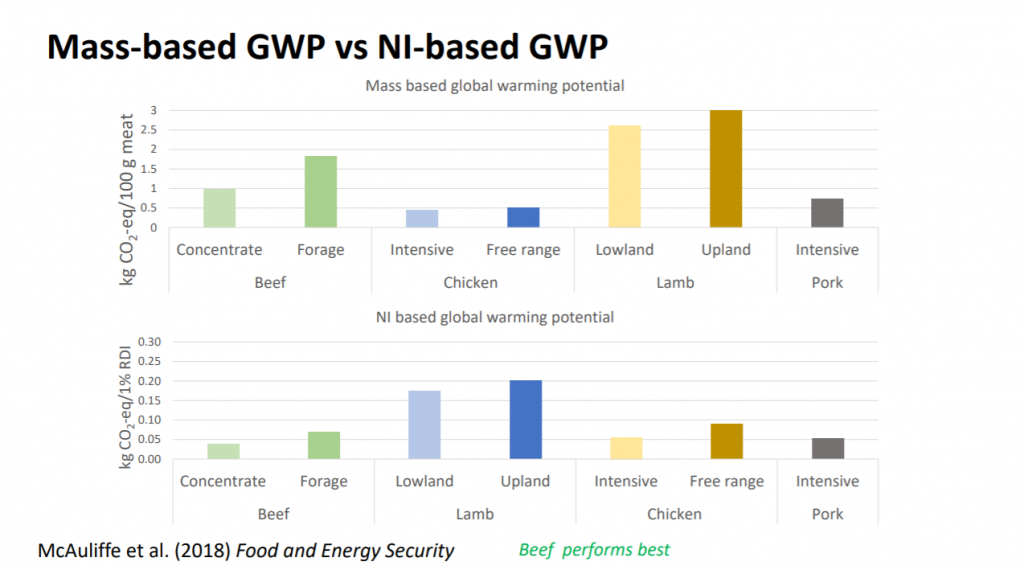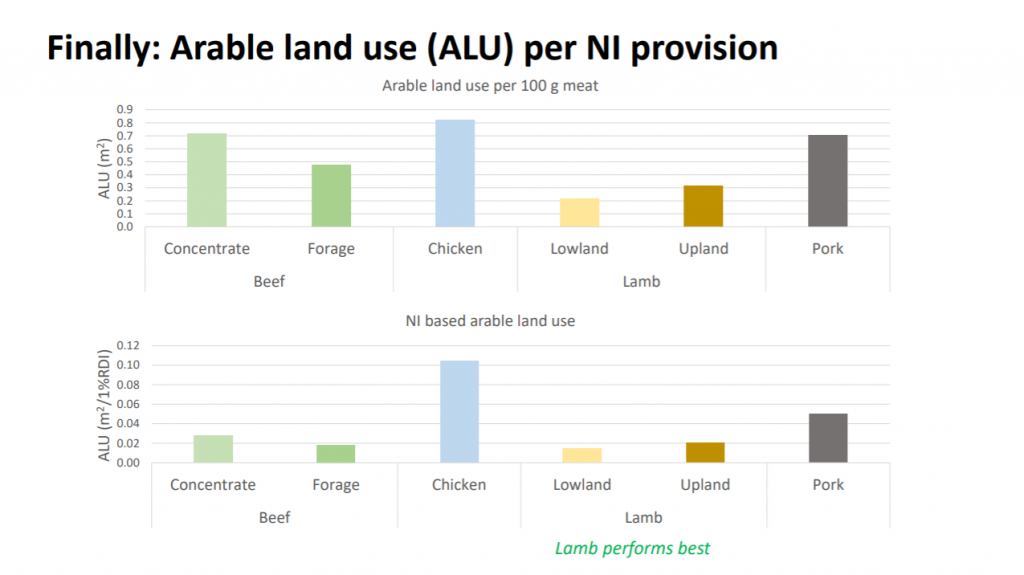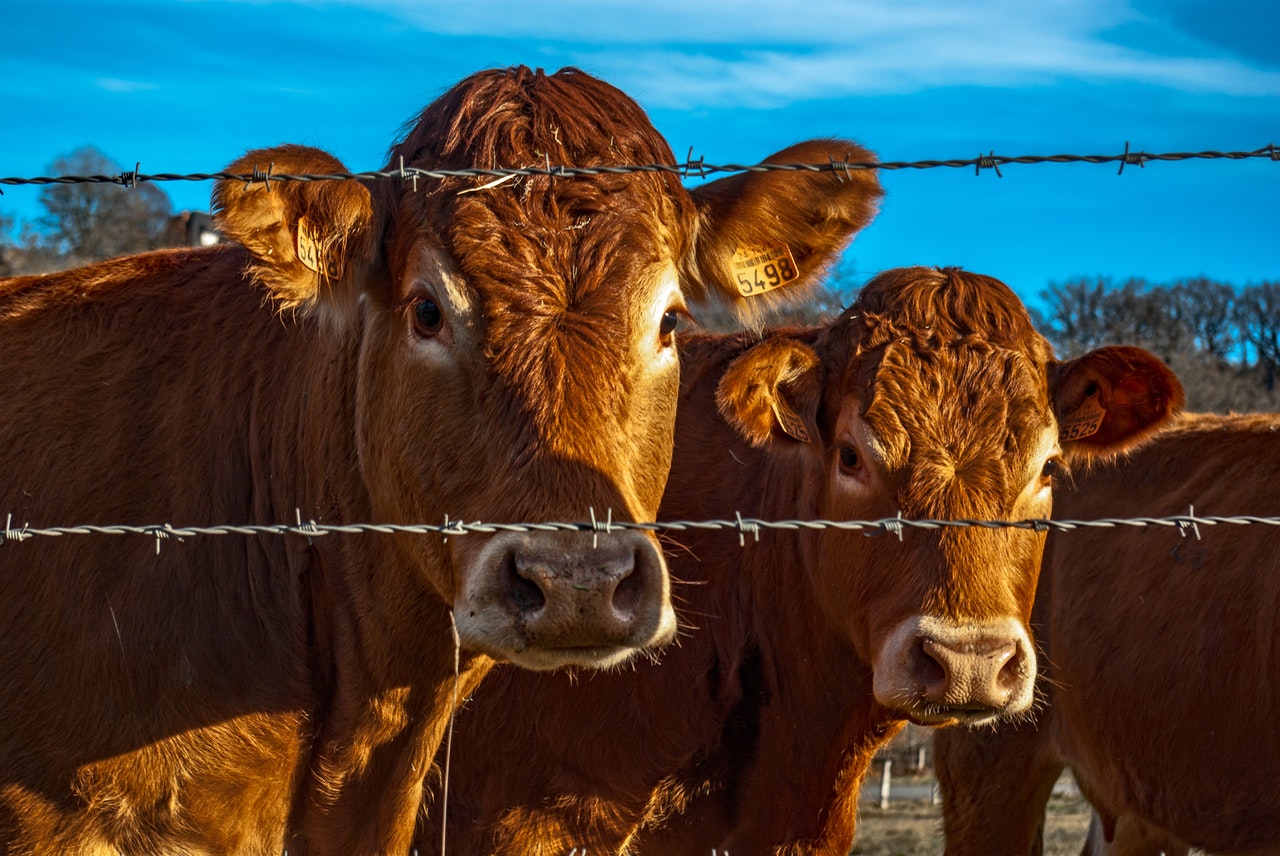As the debate about the carbon footprint of livestock farming rages on, I was encouraged to hear a very persuasive presentation from Professor Michael Lee recently.
Michael heads up the team at UK-based Rothamsted Research’s North Wyke site, a world leading centre for farm-scale ruminant livestock production research.
In the past couple of years, North Wyke has had considerable investment in facilities to support its work and it really is an impressive mix of cutting edge science and pragmatic farming knowledge.
So what was Michael saying when it comes to global warming and livestock production? His argument is many of the figures being bandied about are an oversimplification of a complicated subject. But golly did he do a good job of distilling down the key points. It is true he suggested that when you look at simple measures for global warming potential (GWP) such as C02 equivalent/kg of meat product then the much maligned beef and sheep farming systems do fare rather poorly.
But does one kg of beef have the same nutritional value as a kg of chicken? The answer according to his analysis (actually that of his colleagues Graham McAuliffe et al. he respectfully conceded) is no. And here’s why:
Recommended daily intake
The North Wyke scientists have looked at the recommended daily intake (RDI) nutritional requirements of us humans and mapped this across the nutritional content of the different forms of meat (and systems) to produce a nutrient index based on 10 encouraged and two discouraged nutrients. Then they have compared the typical measure of C02 equivalent/kg of meat with a new measure of C02 equivalent/1% RDI and this rather turns some of the analysis on its head.
As the graph below shows, beef which performed rather poorly from a GWP perspective on the old measure (see top chart), comes out best on the new one. That is to say, for every % of RDI we need in our diet, beef production produces fewer kg of C02 than even chicken!

And while lamb might seem to be lagging even in the new analysis, by looking at arable land used to support the various livestock production systems, lamb does best with chicken again performing rather less well than ruminants on the RDI measure.

The point is not to crash the cause of UK poultry (or even pork) production but to point out that ruminant bashing doesn’t stack up on a RDI basis when measuring C02 equivalency. And while human consumption of plant-based products (as opposed to meat) might be even more sustainable, North Wyke’s work provides a strong argument for grass-based ruminant systems on non-arable land, and that’s even before all the negativities associated with potentially ploughing up swathes of pasture land for arable production and releasing tonnes of sequestered carbon.
So why as a technology provider am I interested in this? Well, if here in the UK rewarding farmers for preserving (even building) “natural capital” is going to become the big game in town, then we need some ways to measure it. Right now, to my knowledge, there isn’t a livestock recording software package out there that measures performance based on (for example) delivery of the human RDI index. This seems an enormous opportunity to start creating a tangible link between human nutrition (society), farm productivity (economy) and the environment through an empirically-based approach. Indeed, these were the three pillars of sustainability that Michael opened his presentation with.
Our own pureFarming livestock recording platform is already a feature-rich white-label tool for organisations helping farmers measure, record and monitor livestock performance but how much better could we make it if we added a new set of sustainability metrics to link on-farm production with the delivery of a healthy diet? That would be bringing farmers closer to meeting the needs of the consumer in a scientifically rigorous way.
I feel a project coming on! Anyone?

